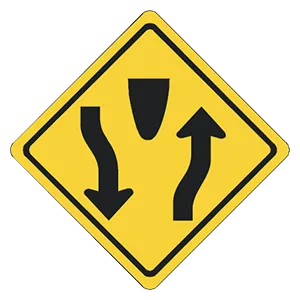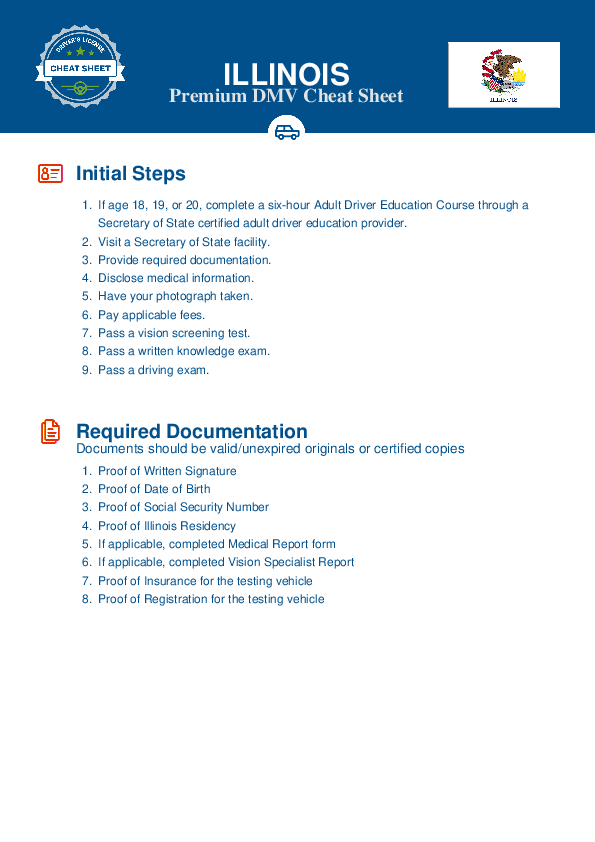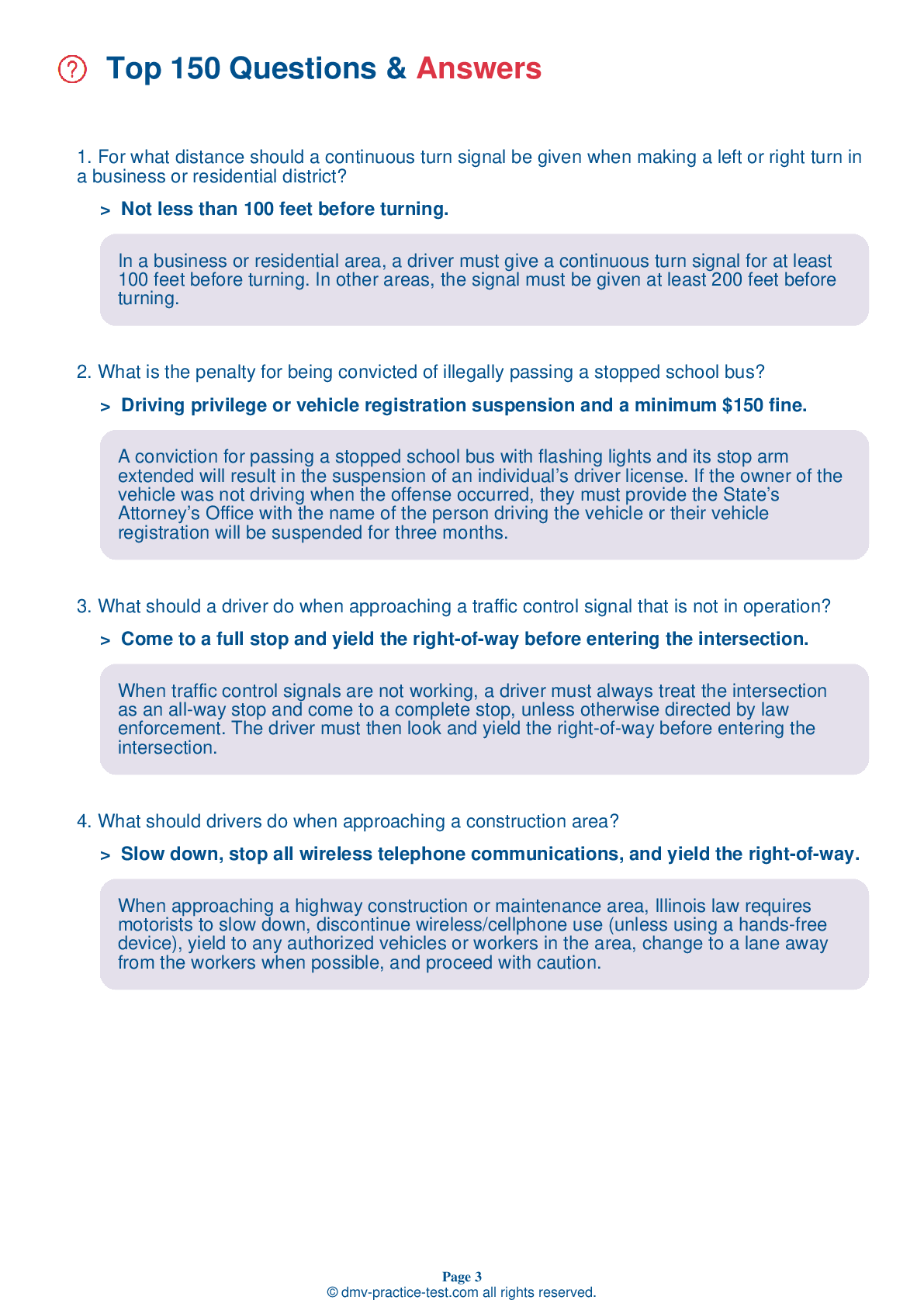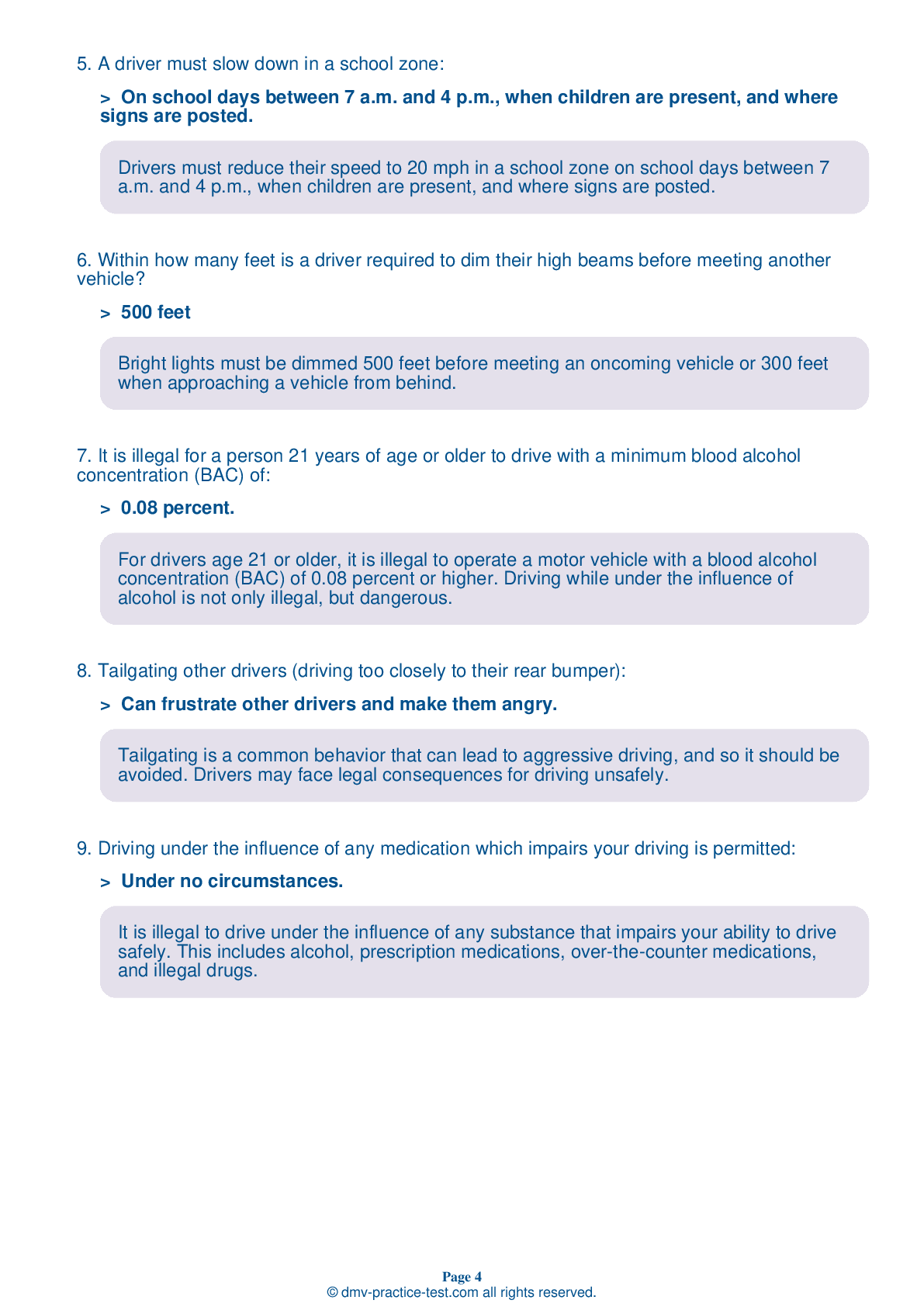FREE Illinois DMV Practice Test #9
For January 2025, this set of Illinois DMV practise tests has been updated. It includes questions based on the most important traffic signs and rules for 2025 from the Illinois Driver Handbook. To study for the DMV driving permit test and driver's licence exam, use actual questions that are very similar (often identical!) to the DMV driving permit test and driver's licence exam.
Each question on the practise exam has a tip and explanation to help you recall the ideas. Questions about traffic rules, traffic signs, and driving statutes, as well as information from the Driver Handbook, will be included in the written portion of the official DMV test.
You must properly answer 38 of the 35 questions to receive a passing mark. To help you prepare for your Illinois instruction permit or driver's licence, take our DMV practise test.
The DMV exam is offered in a variety of languages.
Using any form of testing help will result in an automatic fail, and the DMV may take further action against your driver's licence, so avoid it.
2 . This sign means:
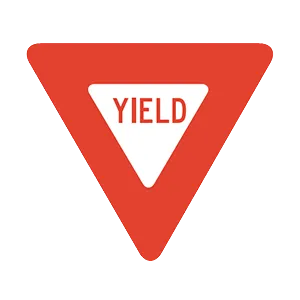
When approaching this sign, you must yield the right-of-way. Slow down and let vehicles and pedestrians crossing your path pass before you proceed. If necessary, stop before going ahead.
3 . This road sign means:

Warning signs provide notice to road users of a situation that might not be readily apparent and are usually yellow with black markings. This warning sign tells drivers to be alert to an intersecting side road ahead.
4 . A driver may pass another vehicle by driving on the shoulder of the road.
Drivers are not allowed to leave the pavement or main-traveled portion of the road to pass another vehicle.
5 . This sign means:

A triangular yellow sign with black lettering indicates a no passing zone. It will appear on the left side of a two-way, two-lane roadway at the beginning of an area where prohibitive pavement markings are also used.
6 . This sign means:
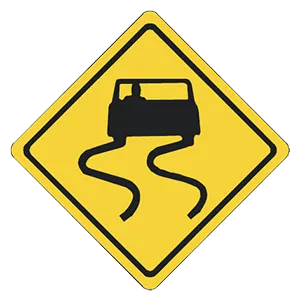
All roads are slippery and dangerous when wet. This sign warns of conditions that can cause a driver to lose control of a car. A driver should slow down when coming upon wet pavement because it takes longer to stop.
7 . Drivers turning left must yield to:
Drivers making a left turn must yield to all vehicles approaching from the opposite direction. This includes bicycles and motorcycles.
8 . A driver who becomes stranded in blizzard conditions should remain in their vehicle.
If you become stranded in winter weather, you should remain with your vehicle. Run the engine only for brief periods of time and open the window to prevent carbon monoxide poisoning.
9 . A teen driver is allowed only two passengers under age 20 in the vehicle during the first 12 months of licensing.
During the Initial Licensing Phase (for drivers ages 16 and 17), the number of a vehicle's passengers is limited to one person under age 20 for the first 12 months a driver has a license, unless the passenger(s) is/are a sibling, step-sibling, child, or stepchild of the driver.
10 . Headlights must be lighted from sunset to sunrise.
Headlights must be turned on from sunset to sunrise.
11 . You are entering a freeway. Check traffic on the freeway by:
When entering any roadway, you must be aware of traffic conditions. Use your side mirror and look over your shoulder to help you see and anticipate traffic when entering a freeway.
12 . What should drivers do when approaching a construction area?
When approaching a highway construction or maintenance area, Illinois law requires motorists to slow down, discontinue wireless/cellphone use (unless using a hands-free device), yield to any authorized vehicles or workers in the area, change to a lane away from the workers when possible, and proceed with caution.
Need Car Insurance? No problem!
Compare the best rates in Illinois and find a personalized policy that meets your needs.
1. Are You Currently insured ?
2. Married ?
3. Do you own your Home?
4. Do you have more than 1 car ?
5. Have you or a Family Member Honorably Served in U.S. Military ?
6. Your Name
7. Age
8. Zip code
IMPORTANT REMINDER:Auto Insurance is Mandatory to drive in Illinois. Get covered before you hit the road to avoid any fines.
Ranked by best match
